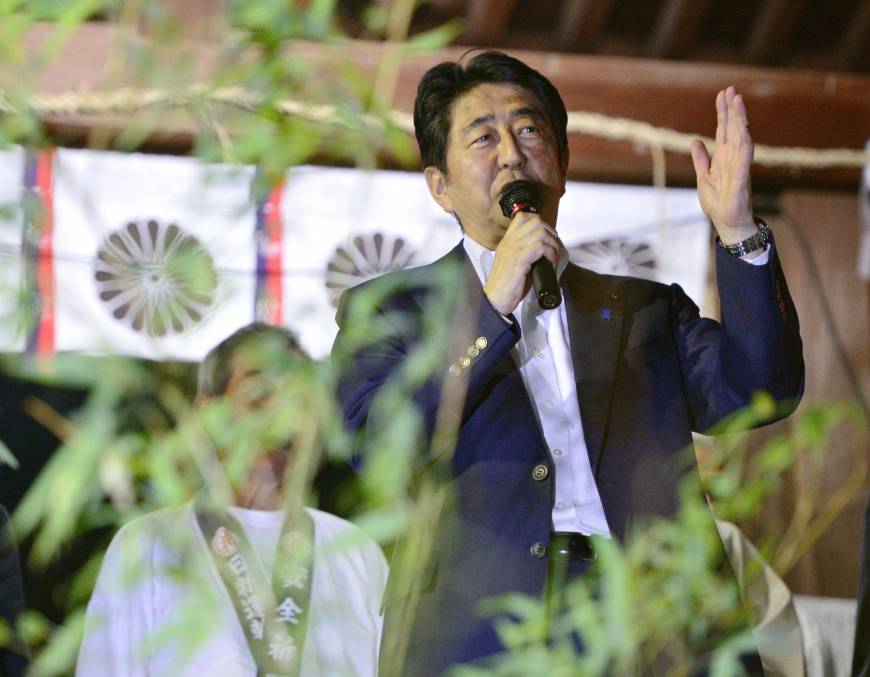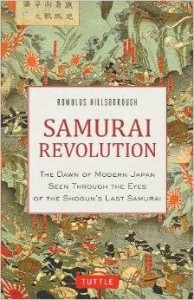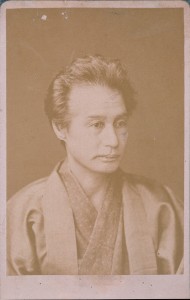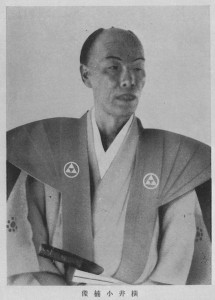Japanese Prime Minister Shinzo Abe has criticized what he claims are inaccurate depictions of “Japan’s actions during World War II, opening a new front in a battle to sway American views of the country’s wartime history,” The New York Times reported on January 30, 2015. Abe has “vowed to step up efforts to fight what he called mistaken views abroad concerning Japan’s wartime actions, when the Japanese military conquered much of Asia.” In fact Japan colonized Korea and Taiwan long before the war. But Japan’s imperialism in Asia was a direct reaction to similar behavior by Western powers in the nineteenth century—namely the United States, Great Britain, and France—which had threatened Japan’s sovereignty.
To understand Abe’s position, and the position of many conservatives in Japan today—which history teaches us is actually quite reasonable—we must know something of the history of the forced opening of Japan by the aforementioned three Western powers in the mid-nineteenth century. It is the history of the Meiji Restoration, also known as “the dawn of modern Japan,” which marked the transfer of power from the shogun to the emperor and unified the nation under the Imperial monarchy in late 1867. One of the most tumultuous and violent periods in Japanese history, the Meiji Restoration kicked off the rise of Imperial Japan—and with it Japan’s colonization of Asian countries.
Until Japan’s treaty with Commodore Matthew Perry of the United States Navy, concluded under the threat of attack by American warships in 1854, and the coerced trade treaties with the United States, France, Great Britain, and other foreign nations that came a few years later, Japan, under the rule of the Tokugawa Shogunate, had been isolated from the rest of the world. Unlike the great Western powers, which had colonized parts of China and India, Japan had not conquered or colonized any foreign nation or territory during the two and half centuries of Tokugawa rule. Great Britain had subjugated much of India in the early part of the century; it had ceded Hong Kong in 1842, under the Treaty of Nanking, which ended the first Opium War. In reaction to Western imperialism, farsighted men in Japan advocated the development of a “strong military and rich nation” to protect Japan’s sovereignty. As I wrote in my recent book, Samurai Revolution: The Dawn of Modern Japan Seen Through the Eyes of the Shogun’s Last Samurai, (Tuttle, 2014), Katsu Kaishu, a founder of the Japanese navy, envisaged a “Pan Asian navy” to be led by Japan based on a “Triple Alliance” with Korea and China, as part of a far-reaching scheme to meet the Western threat from a position of strength. To defend against Western encroachment, Katsu wrote in the spring of 1863, Japan should “dispatch ships to Asian countries to persuade their leaders to form an Asian Alliance and build up our navies . . . and conduct international trade and academic research.” Katsu submitted his plan to the shogunate, which agreed with him.
Katsu’s plan had been triggered by Russia’s occupation of the Japanese island of Tsushima in 1861. Tsushima, located in the strait between Japan and Korea, was one of hundreds of feudal domains comprising Japan before the Meiji Restoration. About a month after Katsu submitted his plan to the government, Tsushima proposed a plan of its own to invade and conquer Korea before that country could be taken over by Western powers, which would not only endanger Tsushima, but all of Japan. Other voices in Japan, including Shimazu Nariakira, the lord of the great domain of Satsuma, also called for overseas conquest as a means of protecting Japanese sovereignty. As I noted in Samurai Revolution, Nariakira, who died in 1858, perceived China’s weakness against France and Britain as a direct threat to Japan. He said that Japan must establish military bases in China and Taiwan to demonstrate its military power to the West to avoid “the same fate as that which has befallen China” because “as soon as England achieves its design on China, it will most certainly direct its military might eastward” toward Japan. Japan must “take the initiative,” Nariakira asserted, and “dominate China, otherwise “we will be dominated. We must prepare defenses with this thought in mind. Considering the present situation, it behooves us first to raise an army, seize a part of China’s territory, and establish a base on the Asiatic mainland. We must strengthen Japan without delay and display our military power abroad. This would make it impossible for England or France to interfere in our affairs despite their strength.” But it was not Nariakira’s purpose to bring about “the liquidation of China, but rather to see China awaken and reorganize itself in order that together we might defend ourselves against England and France”—which resembles Katsu’s vision of a Triple Alliance with China and Korea. But, according to Nariakira, based on China’s self-asserted superiority over Japan, it was doubtful that China would agree to cooperate with Japan. “Consequently, we must first undertake defensive preparations against foreign encroachment. . . . The initial requirement is the acquisition of both Taiwan and Foochow [Fuzhou].”
Satsuma (modern-day Kagoshima Prefecture) was one of two feudal domains that orchestrated and led the revolution to overthrow the shogunate and restore the Imperial monarchy. The other one was Choshu (modern-day Yamaguchi Prefecture). Prime Minister Abe’s forebears, including his grandfather, Nobusuke Kishi, a prime minister in the 1950s, were from Choshu. After the Restoration, continuing with their drive to build a “strong military and rich nation,” former samurai of Satsuma and Choshu, as leaders of the Imperial government, developed a military strong enough to defeat China and Russia in wars and colonize Taiwan and Korea. Future Japanese leaders created a “Greater East Asia” sphere to counter Western power. Their policy was inextricably entwined with the events leading up to World War II. Abe and other conservatives “have bridled at historical depictions of Japan as the sole aggressor in the war, saying that it fought to liberate Asia from Western domination,” The Times reports. The leaders of Asian nations such as China and South Korea, which call “Abe a revisionist out to whitewash Japanese wartime atrocities,” might, along with their counterparts in the United States and other Western countries, benefit by considering the origins of Japan’s aggression through an unbiased review of Meiji Restoration history—including the ideas of Shimazu Nariakira, Katsu Kaishu, and other leading personalities in that history.
For updates about new content, connect with me on Facebook.





